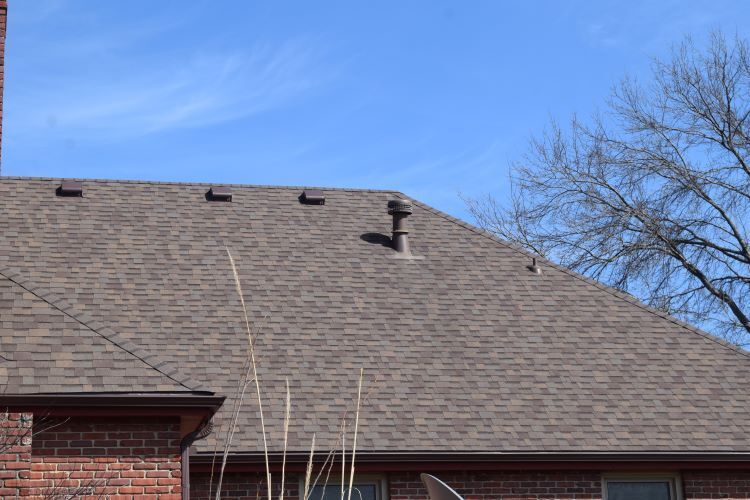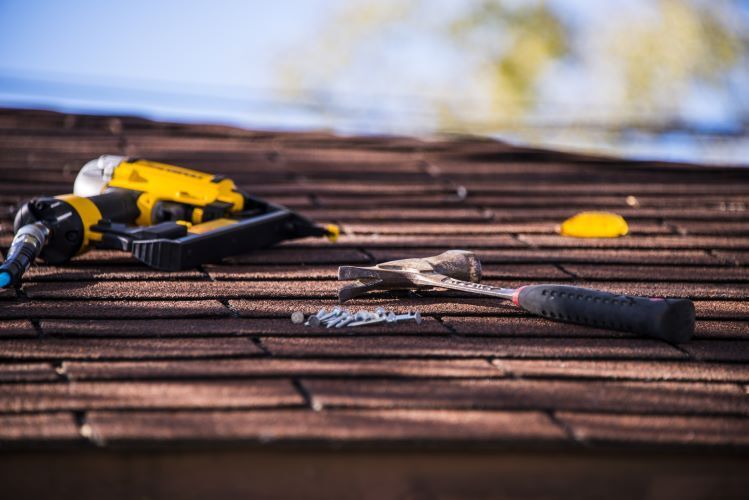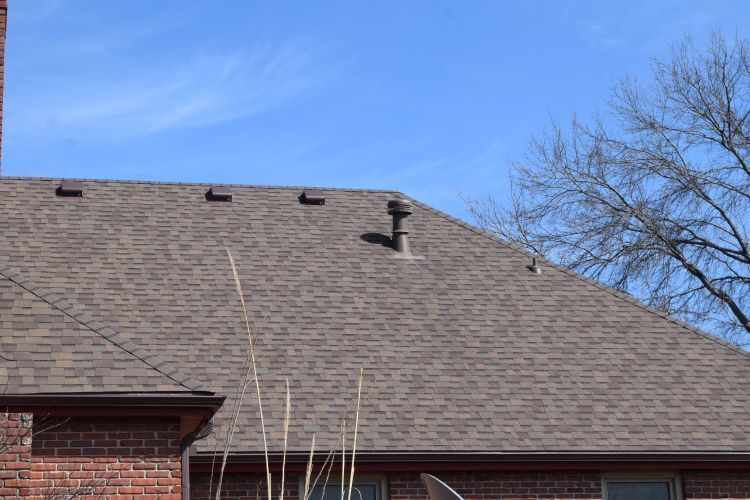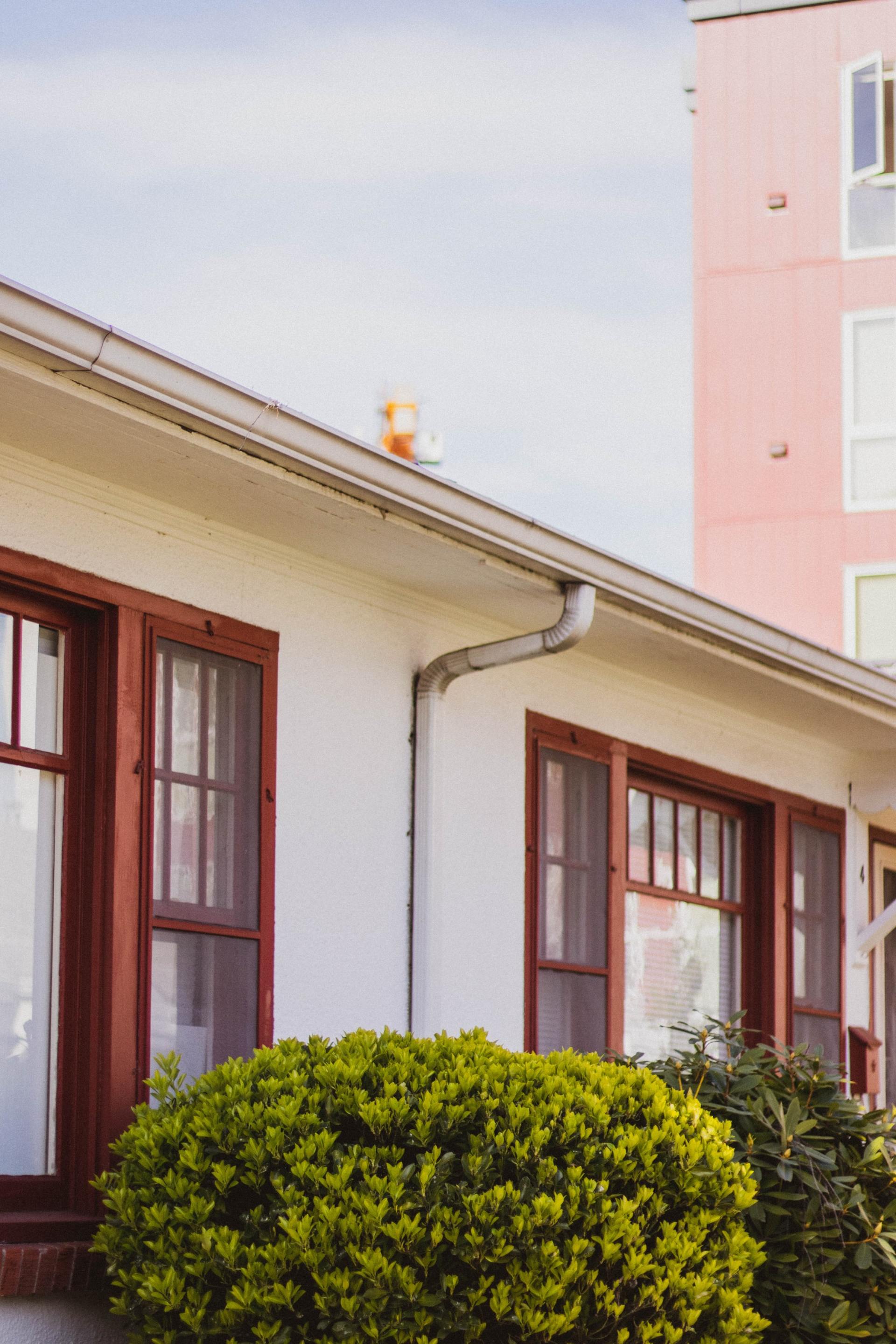Roof ventilation
Proper Ventilation for Your Roofing System

The most important factor in the performance of any roofing system is to have proper ventilation. Ventilation helps reduce moisture levels within a roof, which will help prevent problems with mold growth, mildew, ice dams forming, and general roof degradation caused by water damage. This is especially true for roofs that are intentionally vented or insulated at the attic level.
Ensure Proper Roof Ventilation in Installed!
Modern engineering has greatly improved our capabilities to control weather conditions on buildings through state-of-the-art building insulation systems and highly efficient heating and cooling equipment. However, even with all of these advancements, abating excess moisture can still pose problems if not properly addressed by adequate ventilation. Moisture buildup is often associated with the lack of adequate roof ventilation.
Water vapor emissions within a roof assembly will tend to accumulate at the coldest point in a structure, which is often the conditioned space of a building. This is due to condensation caused by temperature differentials between the heated interior and the colder exterior. Therefore, as more moisture is generated from inhabitants or other sources within a building, it becomes trapped inside the roofing system unable to escape into the atmosphere—typically leading to serious problems associated with rot, mold growth and deterioration of substrate materials. This can occur even on those roofs that are vented as recommended by industry standards if those vents are not properly sized or do not have adequate air-flow across them. Evaporative cooler systems can also cause excess humidity within a building if not properly designed or maintained.
Luckily, there are many roofing manufacturers who recognize the significance of adequate ventilation and design their products with this in mind. Their roof products are typically available in “vented” versions to make up for non-vented versions, like highly reflective shingles that provide warmth but can lead to moisture during winter months when snow is present. Solid flat roofs should be sloped toward collection drains while membrane roofs should have scuppers at perimeter locations to allow moisture removal through gravity. Flashing corners should also have appropriate drainage provisions to ensure water does not accumulate within the intersection areas of the roof assembly where it will create rot conditions under deck materials or towards other building elements. Proper insulation of all types (rigid board, spray foam or blown-in cellulose) should also be installed at the attic level to prevent condensation on cooler surfaces like metal roofing panels.
Roof ventilation is often overlooked by homeowners and contractors alike; however, it can be one of the most important factors in maintaining a properly functioning roof assembly that will provide protection from the elements for years without major problems.
ROOF VENTILATION IS IMPORTANT
Now that you have a basic understanding of what makes up a roof system and how proper ventilation contributes to its performance, here are some reasons why waterproofing membranes should never touch the inside surface of a building envelope.
When water vapor cannot pass through a waterproofing membrane due to a lack of adequate ventilation, water can collect on the coldest surface that it comes into contact with. In many cases, this will be pooling at the low point of a roof system where cold air from outside meets warm air from inside—which is typically near insulation or other cooler building materials like metal roof decks. This creates a very dangerous condition called an ice dam.
Ice dams form when outdoor temperatures drop below freezing and snow accumulates on roofs. As snow melts due to solar radiation warming the dark colored roofs, water trickles down until it comes in contact with colder surfaces that do not lose heat as rapidly as metal or wood decks for example. Since these surfaces are also often located at lower elevations on the roof, water will accumulate in these areas and freeze once temperatures drop to below freezing. When this happens, it creates a dam that prevents future melting snow from draining, which increases the risk of ice dams forming.
Proper ventilation allows for colder surfaces inside a building envelope to be cooled by outside air while warmer surfaces are allowed to release their heat into the atmosphere. This is why roofs should not sit directly against an insulation material because without adequate ventilation, insulating materials can retain condensation or even cause moisture related problems themselves if they are installed over concrete or masonry walls. It also eliminates issues with other roofing system components like drainage items becoming blocked by ice dams before they have a chance to melt away during spring thaw.
VENTILATION IS CRITICAL FOR ROOF SYSTEMS
While roof ventilation is especially important for solid (rigid insulation) and membrane roofing assemblies, it is also necessary for many other types of flat roofs as well. In a typical built up roof assembly, the waterproofing membrane has a layer of gravel between it and the base sheet that not only acts as an air barrier but also protects against flex cracking caused by thermal movement. The need to have adequate ventilation in these systems is so great that many companies offer vents as part of their design, which may be preformed curbs or even scuppers permitted at certain locations around the perimeter of the building envelope.
Properly designed and maintained leak proof mechanical ventilation systems are critical for all roofing assemblies where EPDM, Hypalon or TPO sheet membranes are used. Even if the roof is designed to be unvented (for example using spray foam insulation with condensation drains), at least one soffit vent should be installed on each side of the building envelope to prevent moisture related problems caused by lack of proper ventilation. For steep slope roofs without eaves, ridge vents are necessary to keep ice dams from forming and causing damage under the rooftop structure.
PEOPLE MAKE THE DIFFERENCE
Not only can inadequate or improperly installed ventilation lead to costly repairs that affect the long term performance of a building's roof system; it can also cause health issues for those who occupy them as well. Higher moisture content in the air can lead to health problems like allergies and asthma, which is why it is so important to have properly installed and maintained ventilation systems on roofing assemblies.
This is also why it's critical for quality roofers who install roofing assemblies that include proper ventilation to use solid insulation products like metal roofs with integral insulation (and not something like reflective foil faced bubble wrap insulation). These materials are designed specifically for use on low slope roofs while still allowing them to drain properly without causing thermal movement related damage.
Getting rid of ice dams often requires professional intervention, especially when they cover large areas or affect tall buildings where the weight of snow accumulated over several months could cause structural damage if left alone. If you suspect your building may be experiencing issues with ice dams, or if you want to schedule a free estimate on the installation of a new roof system that includes proper insulation and ventilation, don't wait another minute. Contact an experienced local contractor today.
ROOF VENTILATION IS CRITICAL FOR THE PROPER FUNCTION OF ROOFING SYSTEMS
CALL US TODAY TO ENSURE YOUR ROOF IS VENTING PROPERLY AND SAFELY!
You might also like
Contact Us



